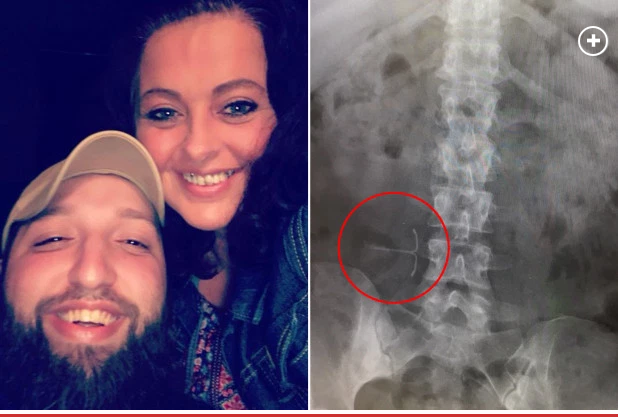Tag: contraception
Ohio woman lives with IUD floating in abdomen for 11 years
In late 2007, Melinda Nichols of Chillicothe, Ohio, decided she had delivered her last child. She’d already tried the pill and a form of the Depo-Provera shot without success. So, a few weeks after her youngest son’s birth, she opted for the Mirena intrauterine device (IUD), a semi-permanent form of hormonal birth control.
Nichols returned to the doctor who performed the insertion for a follow-up just a couple weeks later. She was told a routine X-ray would be taken to make sure her IUD was in the same place her doctor had left it.
The X-ray showed no IUD.
“It fell out,” the doctor told her. She asked, “Wouldn’t that be something I would have seen?” They assured her it can happen without notice, and suggested she get a another one. Frustrated, she made the final call to have a tubal ligation instead.
Cut to a decade later — last November. Nichols, now 40, had apparently strained a muscle in her back while on the job. She had another abdominal X-ray at that time.
“You need to call your OB,” the doctor told her. “Your IUD is in a weird spot.” Her X-ray showed that the implant had apparently punctured through the cervix and migrated up the abdominal cavity. Nichols was understandably baffled.
“I had no clue,” Nichols tells The Post. “It was in me for almost 11 years.”
Dr. Stephen Chasen, a maternal-fetal medicine specialist at Weill Cornell Medicine & NewYork-Presbyterian, says IUD “migration” happens due to “perforation” of the uterine wall. This may occur during the insertion process thanks to an inexperienced practitioner. Or, the IUD may “erode” through the uterus and end up floating somewhere in the abdomen. This happens to about one out of every 1,000 IUD patients.
“For the cases of IUDs gradually eroding out of the uterus, it is not clear why it happens or whether or not it can be prevented,” Chasen tells The Post.
Chasen says the risks of a displaced IUD are not great. Unintended pregnancy would be the most common unwanted outcome. Some women — like Nichols — might experience a mysterious abdominal pain.
“I would get this weird pain in my side,” she says, but didn’t think much of it. “You don’t go to the doctor just because you have a weird pain every once in a while.”
Late last month, she went in to have her IUD removed via laparoscopy. Using snaking cameras and robotic arms, surgeons explored her lower organs in search of the rogue implant.
Had Nichols not seen a doctor for an unrelated issue, she says there’s no telling how long she may have kept going with the IUD missing inside her body. She never went back to figure out why the doctor who performed the insertion didn’t see the device in the first follow-up X-ray.
She hopes women will read her story and be sure to press their doctors to be more thorough.
The IUD isn’t the only contraceptive implant that can go missing in the body. Last November, a report found that Nexplanon implants — usually inserted just under the skin of the upper arm — were turning up in the lungs, chest and vital arteries of some patients.
“Make sure that if you have something like this that you check it,” says Nichols. “If they say it fell out, you make sure they know it fell out!”
via: https://nypost.com/2019/02/11/ohio-woman-lives-with-iud-floating-in-abdomen-for-11-years/


